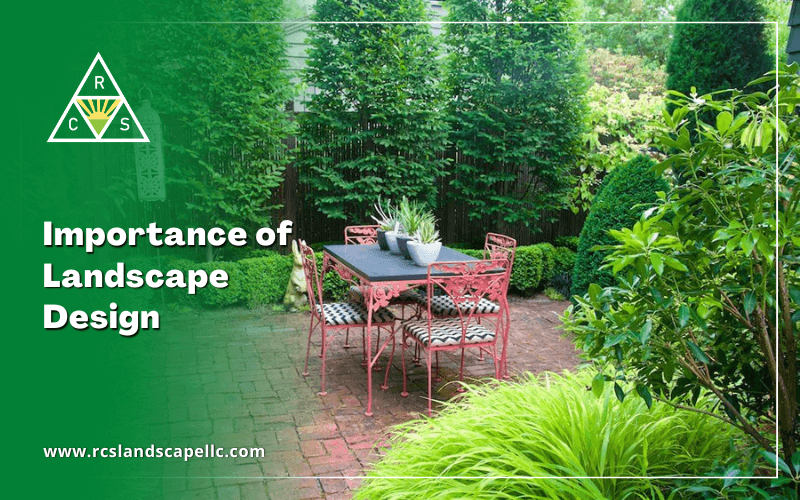A Biased View of Landscape Design
A Biased View of Landscape Design
Blog Article
The Best Strategy To Use For Landscape Design
Table of ContentsMore About Landscape DesignThe smart Trick of Landscape Design That Nobody is Talking AboutNot known Incorrect Statements About Landscape Design The Best Guide To Landscape Design
When developing a residential landscape, the most important action is to put a plan on paper. Establishing a master strategy will certainly conserve you money and time and is much more likely to result in an effective design. A plan of attack is developed via the 'design procedure': a step-by-step approach that takes into consideration the ecological problems, your desires, and the components and concepts of style.The 5 steps of the style procedure consist of: 1) performing a website supply and analysis, 2) determining your requirements, 3) developing functional representations, 4) establishing theoretical layout plans, and 5) drawing a final layout plan. The initial three steps develop the visual, functional, and horticultural requirements for the design. The last 2 actions after that apply those needs to the production of the final landscape plan.
This is a critical step for both plant selection and positioning and situating household activities and features. It is essential since the exact same climate problems that affect the plantstemperature, humidity, rain, wind, and sunlightalso affect you, the individual. The following step is to make a listing of your demands and desiresthis helps you determine how your lawn and landscape will be used.
The useful representation is after that used to locate the task spaces on the site and from this representation a theoretical strategy is created. The last step is a last layout that consists of all the hardscape and planting information that are needed for installation. Throughout the style process there are 10 important points to take into consideration: for plant option and activity place by considering what you desire and need to assist identify shapes and arrange areas by designating task locations and relating to aspects for both the environment and the user by utilizing massing and layering methods such as transition areas and focal points in the materials, the shades, and the surface appearances for the growth and upkeep of plants by utilizing sustainable layout practices A complete stock and evaluation of the website is necessary to figure out the ecological conditions for plant growth and the ideal usage of the site.
The Ultimate Guide To Landscape Design
The kind of soil determines the nutrients and wetness readily available to the plants. It is constantly best to make use of plants that will prosper in the existing dirt. Soil can be changed, change is commonly expensive and many times ineffective. Existing greenery can provide hints to the dirt type. Where plants grow well, note the soil conditions and utilize plants with similar expanding demands.

Sun/shade patterns, the like this amount and size of direct exposure to sun or shade (Figure 1), produce microclimates (often called microhabitats) - Landscape Design. Recording website problems and existing vegetation on a base map will reveal the location of microclimates in the yard. Plants usually come under a couple of of four microclimate categories-full sun, partial color, color, and deep visit our website color
The Ultimate Guide To Landscape Design
Figure 1. Sun and shade patterns. Credit Rating: Gail Hansen, UF/IFAS It is important to keep in mind all the current conditions on an exact base map when doing the website inventory (Number 2). Utilities such as high-voltage line, sewage-disposal tanks, below ground utilities and roofing overhangs identify plant area. Utilize a land surveyor's plat of your building for the limits and location of your home.


Establish the time and cash you are ready to put into preserving the plants and hardscape-be reasonable about your objectives and capability. Proposed usage locations. Credit Report: Gail Hansen, UF/IFAS There are lots of different landscape layout motifs- from easy to complicated, but it is useful to choose one to lead your plant and material option.
Lots of people discover it valuable to look in gardening publications and publications for concepts. This is an excellent beginning, however know that the yards in the photos were chosen because they are outstanding examples. Consider the pictures with a vital eye to collect concepts that you can adjust to your passion level, your budget and your site.
Make a decision if you intend to open your lawn, close your backyard, or a little of both, to these sights (Landscape Design). In various other words, do you desire the garden to confine the area around you and relate primarily to your home, or do you want the yard to open sights and look outside, connecting to the surroundings? This will certainly give you a beginning indicate think of a theme
The Best Guide To Landscape Design
Every yard needs to have a type motif, yet not all yards have a style theme. Many domestic yards have no specific style except to blend with the residence by duplicating details from the architecture such as products, color, and kind.
In a form theme the organization and shape of the rooms in the lawn is based either on the form of your house, the shape of the areas between your home and the building limits, or a preferred form of the home owner. The type motif figures out the form and company (the format) of the spaces and the web links in between them.

Report this page